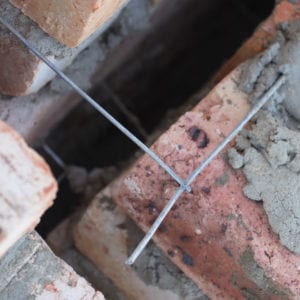What are cavity walls?

Cavity walls were first introduced into the UK in the late Nineteenth Century. They were presented as a method of tackling wind-driven rain for penetrating the solid brick walls of homes located on the west and southwest coasts.
Cavity walls became popular in construction generally, when it was discovered that the gap between the internal and external walls provided an element of thermal insulation for the property.
Cavity walls started to develop in sophistication with an introduction of a lighter aerated block instead of brick on the inner wall. In the 1980's new hoses were built with added insulation within the cavities to improve thermal retention.
Further to this, the government backed a retrospective installation grant to the general public for cavity insulation to be placed within older properties. However, unlike the plans for newly built homes, the method of installing insulation into properties was completely different. In particular, the insulation is a full fill of the cavity, whereas in a newly built home the cavity is only insulated on the inner wall and the insulation is away from the outer wall leaving a gap. this gap stops fluid from transferring from the outer wall to in the insulation and so so penetrating the inner wall. so you can see this is where the problems start to arise, and some of the issues can be catastrophic.
In most cases, the impact of installing cavity wall insulation either incorrectly or into an unsuitable property can be mainly aesthetic. with damp marks causing discoloured walls whether they are painted or wallpapered. However, this can cause further issues such a crumbling plaster or worse wood rot within the foundations of the walls. In some situations, there also can be a detriment to one's health especially if the individual has a pre-existing condition such as Asthma. black mould that is most commonly seem with extreme dampness can cause or exasperate even skin conditions such as eczema.
How much can it cost to remove cavity wall insulation?
In most cases, where it is just the insulation beads that have been placed into the cavity, it can cost typically between £1500 and £5000 to remove. this usually depends on the size of the property.
However, if your property has stone walls, the cost can be significantly higher. It can cost between £40,000 and £100,000 to remove the insulation. This is because of the extensive work required to complete the task and also because these properties are filled with expanding foam which is more difficult to remove.
If you have a property that has been negatively affected by cavity wall insulation please use the form below to contact our sponsors Butterworths Solicitors.
[contact-form-7 id="350" title="cavity wall submission form"]
This page has been sponsored by our Associates at Butterworths Solicitors who are regulated by the SRA under SRA ID: 76501